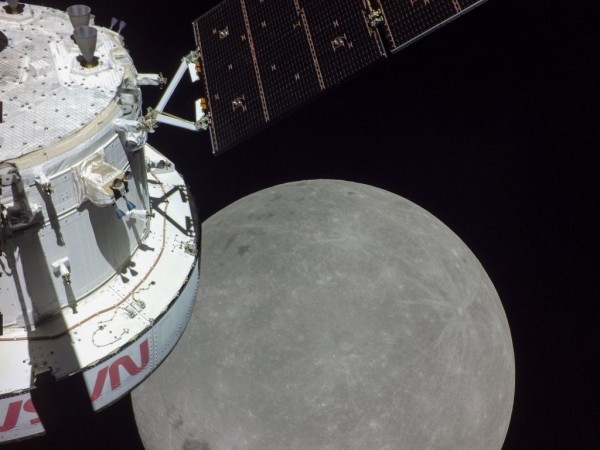NASA suddenly lost touch with its moon-bound Orion capsule early on Wednesday morning, Nov. 23, for unknown reasons, according to a report by Space.com.
The unmanned Orion capsule has been operating successfully since flying to the moon on NASA's Artemis 1 mission last Nov. 17.
However, there was a hiccup: the Deep Space Network, NASA's communication system composed of radio dishes, experienced a communication breakdown on Wednesday at 1:09 am EST (0609 GMT). This caused mission controllers to lose contact with Orion.

Did it Have an Impact on Orion?
The reconfiguration has been carried out successfully several times in recent days, and the team is looking into the cause of the signal loss. The problem was fixed by the team by reconfiguring the ground side, according to an update from NASA.
Engineers are analyzing data from the incident to try to figure out what happened, and the command and data handling officer will be downlinking data collected onboard Orion during the outage to be used in that evaluation.
Orion did not sustain any damage and its current configuration is healthy, according to NASA. Officials added that Orion was able to survive the 47-minute communication breakdown in fine shape.
Orion is preparing for a critical operation on Friday, Nov. 25. It will ignite its engines to place the spacecraft into orbit around the moon. If all goes according to plan, Orion will remain in that orbit for nearly a week before returning to Earth on December 1.
Breaking Apollo 13's Record
This weekend, Orion will beat Apollo 13's record for the longest distance traveled by an astronaut-designed spacecraft, which was set by NASA in 1970 at about 250,000 miles (400,000 kilometers) from Earth.
It will also have reached a maximum distance of about 270,000 miles from Earth (433,000 kilometers) next Monday. On December 11, the capsule will touch down in the Pacific Ocean near the Californian coast with the help of a parachute.
In 2024, Artemis 2-which will sail a crewed Orion around the moon-is scheduled to carry astronauts for the first time.
A year or two later, Artemis 3 will launch, landing astronauts close to the moon's south pole, where one of NASA's primary objectives for the Artemis mission is to establish a crewed base.
The project has cost more than $40 billion since it began in 2017. NASA's key goals will be to prioritize human space flight and keep a permanent presence on the lunar surface by building a space station and a base camp there.
This article is owned by Tech Times
Written by Jace Dela Cruz




![Most Useful Google Chrome Keyboard Shortcuts You Need to Know to Improve Your Browsing Experience [2024]](https://d.techtimes.com/en/full/449047/most-useful-google-chrome-keyboard-shortcuts-you-need-know-improve-your-browsing-experience-2024.jpg?w=184&h=103&f=476d29fd60df70a67f6679f99a2ca6d0)